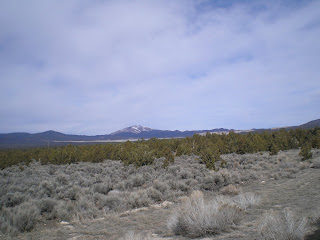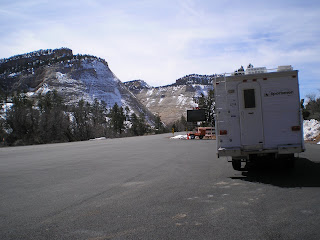Bishop, CA
Here are two obituaries from The Inyo Register of well-known and influential mountain climbers whose ashes were scattered in the mountains they so deeply loved.
--
Norman Asa CLYDE
--
Obituary
--
Thursday 4 January 1973 [Bishop, CA] Inyo Register, p. 17
--
Norman Clyde, Famed Mountaineer, Author, Dies At Age Eighty-Seven
--
Norman Asa Clyde, famed western mountain climber, explorer, author and photographer, died Dec. 23 at Inyo County Sanitorium in Big Pine at the age of 87.
Clyde, who resided alone for many years at a secluded ranch west of Big Pine, had moved to the sanitorium 2 years ago following several lengthy illnesses.
Born in Philadelphia, Penn., in 1885, to Charles and Isabelle (Purvis) Clyde, he was eventually to become one of the most widely-known figures in the lore of the west, despite his inclination toward privacy.
Educated at five different universities, (held an AB degree and a sciences doctorate from Geneva College of Pennsylvania) he attended the University of Wisconsin, the University of California at Los Angeles and Berkeley, and the University of Southern California.
Clyde ascended more than 1000 peaks in his lifetime, most of them by himself, ranging from Baja, California to the Canadian Yukon, and was an acknowledged expert on high-altitude flora and fauna (particularly the Hudsonian and Arctic Alpine zones of the Sierra Nevada) and contributed to knowledge the geological history and structure of mountain ranges of the Western United States.
More than 200 of Clyde's climbs were first ascents, including new routes. In 1926 while exploring Glacier Park, Montana, he was reported to have conquered 36 peaks in 36 days. A member of the San Francisco Chapter of the Sierra Club, he rescued numerous lost and injured persons, sometimes lomg after other searchers had given up.
His extensive mountaineering exploits brought him fame not only for peaks ascended, but also as author of several books on various aspects of the mountains, more than 300 magazine articles and numerous essays.
Clyde was at various times a zoological collector for the University of California, a guide, a climbing and ski mountaineering leader with the Sierra Club, and had in recent years climbed with the Seattle Mountaineers and Alpine Club of Canada.
A noted linguist and classical scholar, Clyde was a recipient in 1962 of the Geneva College Distinguished Service Award, among other awards and honorary degrees through the years.
He was from 1898 to 1910 a high school teacher in North Dakota, Arizona, Utah, and California, and was at one time principal of the Independence schools.
Clyde was known as the "Old Gaffer and "The Pack that walks like a man," in mountaineering and literary circles.
Jules Eichorn, in a prologue to the recently-published Norman Clyde of the Sierra Nevada; Rambles Through the Range of Light said, "I first saw Clyde standing in the sun in front of the Glacier Lodge, a jut-jawed, blue-eyed, ruddy complexioned animated block of granite, somewhat resembling a soldier -- mainly, I think, because of his campaign hat, which never (as I learned) left his head....Here was a man who had made up his mind what he had to do and would never swerve from his objectives...."
Clyde held membership in the California Academy of Sciences, the National Rifle Association, the American Alpine and Appalachian clubs, the Sierra Club, and many other organizations.
Only know survivor to date is a sister, Mrs. H.E. McKelvy of Gibsonia, Penn.
...........................................................................................................................
William Earl "Smoke" BLANCHARD
--
Obituary
--
Friday 30 June 1989 [Bishop, CA] Inyo Register, p. 2
--
By Heidi Walters, Inyo Register Staff
--
A tale of a truck-driving mountain climber who leaned toward Buddhism might sound like a tall one to some.
To the many friends of Smoke Blanchard, the tale might be tall but only in intrigue and truth, and wide in complexity and thought.
Smoke, 74, died a week ago at the Antelope Valley Hospital in Lancaster after suffering major head injuries in an automobile accident near Ridgecrest. He is survived by a son, Bob Blanchard of Bishop, two step-daughters, girlfriend Keiko Ishikowa, and many, many friends.
Some of his friends, in trying to describe Smoke, have drawn a picture of an individual who had a basic outline but one that was flexible, that could change according to the circumstances and place.
"Smoke was a pretty unusual person and yet he appeared very ordinary on the outside -- and he liked it that way," says long-time friend Doug Robinson, of Bishop and Santa Cruz. "His Buddhist philosophy was, seeming to be no one special, walking down the street in his work clothes."
--
Special to Many
--
But for all his modest, unassuming, simple exterior, Smoke was someone special to many throughout the world. Although friends say he could be gruff at times -- especially with those who defile the natural world with beer cans and other trash, or those who ignore the beauty and dangers of the mountain world -- for the most part they say he was soft-spoken and tolerant.
Perhaps Smoke's greatest influence was on the mountaineering community. He mingled with old timers like Norman Clyde and Jules Eichorn, and he tossed ropes to and swapped stories with modern climbing luninaries as well.
But pomposity never entered into it -- Smoke loved to teach the ways of the mountains to anyone who cared to learn.
Gordon Wiltsie, a climber, writer, and Eastern Sierra local -- like many of Smoke's friends -- says Smoke was "what a mountaineer should be: just being in the mountains and teaching others."
--
Lived As a Bodhisattva
--
"In Buddhist terms, I see him as a bodhisattva -- somebody who dies, becomes enlightened, and comes back to work as a teacher," Wiltsie says. "He was someone who learned the magic of the mountains -- the spell -- and was always taking the knowledge back to teach people."
From the sounds of it, Smoke shared the nirvana of the mountains with people throughout his life. From Nepal to Japan to India to the mountains of Oregon, Alaska, California and beyond, Smoke climbed, walked, drove, rode his bicycle and made friends.
And somewhere in between, for about 25 years, he drove a truck -- hence the name "Smoke," after the black smoke from the truck's stacks; although others say his name came from his pipe-smoking habit of years past. But during those years on the road, his mind whirled as fast as the speeding wheels with thoughts of Eastern philosophy, the Japanese language, religion, poetry -- anything and everything.
--
'Flying in a Straitjacket'
--
In a book he wrote and published in 1985 called Walking Up and Down in the World: Memories of a Mountain Rambler, Smoke describes the sensation of guiding a truck across the highways of America:
"By definition the driver is confined to the cab. It is a strange mixture of freedom and bondage, like flying in a straitjacket." Later, on the same subject: "I earned a wage for using 10% of my mind while having the free-wheeling use of the other 90 percent. I wouldn't have traded with a king."
But while trucking offered Smoke long hours of thinking, perhaps being in the mountains offered more soul-satisfying thinking time.
He liked to climb and walk alone. In a letter to Robinson a few months ago, Smoke describes a hike he took: "I go up a route less traveled and come down a route where I see no one."
But he also liked to climb and walk with others, listening to their tales. As James Wilson, owner of Wilson's Eastside Sports in Bishop and a friend of Smoke's puts it: "He liked people a lot, especially if they were good walkers and good talkers."
--
'Mountain Picnic-Pilgrimage'
--
And, unlike many mountaineers, his philosophy of mountaineering excluded elitism and was simple: to enjoy it.
As he wrote in his 1985 book: "For half a century I have tried to promote that mountaineering was best approached as a combination of picnic and pilgrimage. Mountain picnic-pilgrimage is short on aggression and long on satisfaction."
One of Smoke's favorite mountain picnic-pilgrimage spots was the Buttermilks west of Bishop.
...........................................................................................................................
Links:
- Wikipedia acticle on Norman Clyde
- Phil Pister's remembrances of Norman Clyde
- While initially on another subject, Hrvjoe Galic's research contains numerous, well-documented bits of information on Norman Clyde
- American Solo Mountaineering article on Norman Clyde
- Wikipedia article on Smoke Blanchard
- Research Notes of author of above-linked Wikipedia piece on Smoke Blanchard
Sa 26 Mar Actual Route: Bishop - Laws Museum - Bishop

































































